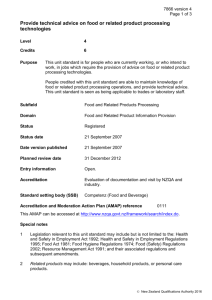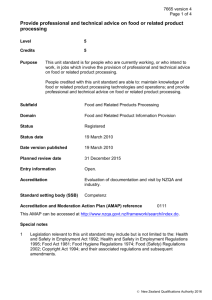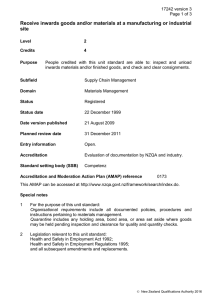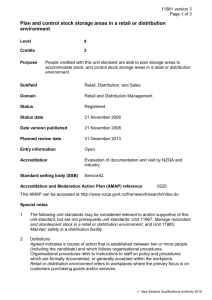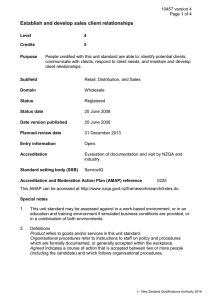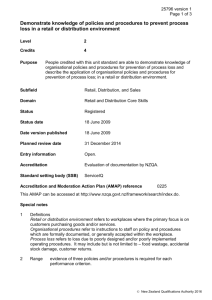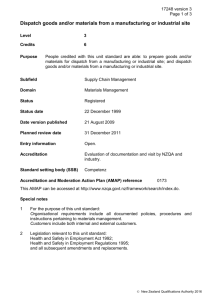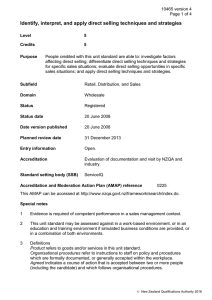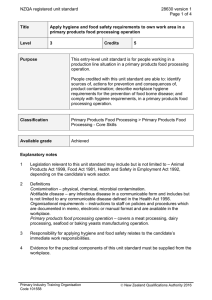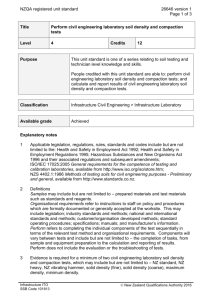24528 Demonstrate knowledge of food processing industry
advertisement
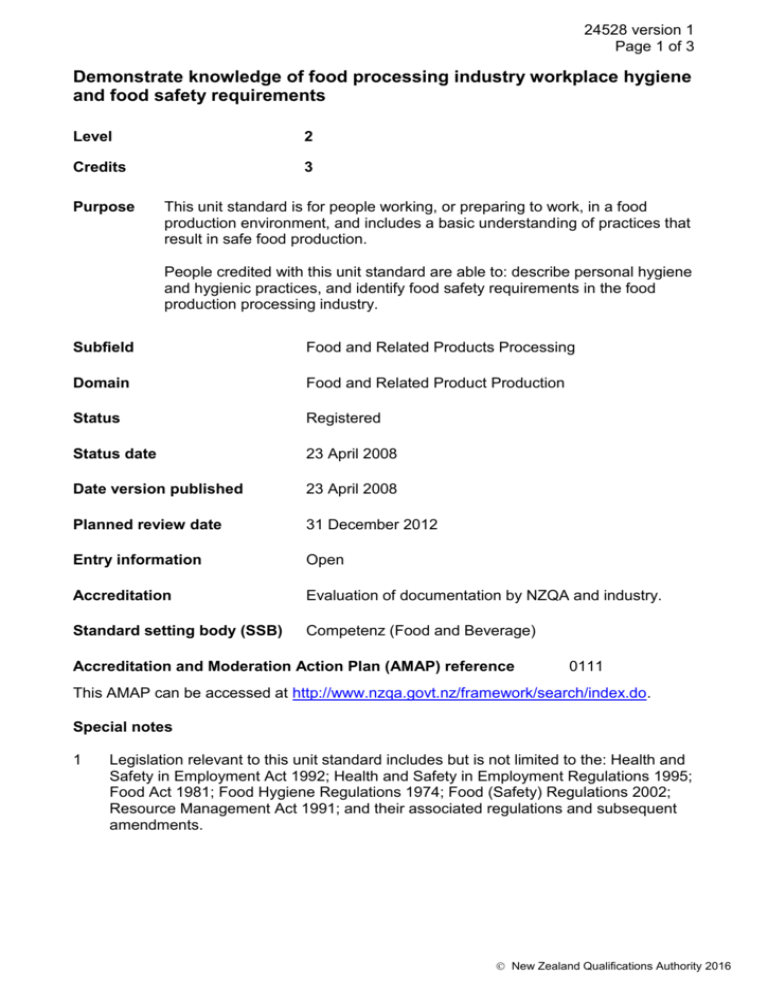
24528 version 1 Page 1 of 3 Demonstrate knowledge of food processing industry workplace hygiene and food safety requirements Level 2 Credits 3 Purpose This unit standard is for people working, or preparing to work, in a food production environment, and includes a basic understanding of practices that result in safe food production. People credited with this unit standard are able to: describe personal hygiene and hygienic practices, and identify food safety requirements in the food production processing industry. Subfield Food and Related Products Processing Domain Food and Related Product Production Status Registered Status date 23 April 2008 Date version published 23 April 2008 Planned review date 31 December 2012 Entry information Open Accreditation Evaluation of documentation by NZQA and industry. Standard setting body (SSB) Competenz (Food and Beverage) Accreditation and Moderation Action Plan (AMAP) reference 0111 This AMAP can be accessed at http://www.nzqa.govt.nz/framework/search/index.do. Special notes 1 Legislation relevant to this unit standard includes but is not limited to the: Health and Safety in Employment Act 1992; Health and Safety in Employment Regulations 1995; Food Act 1981; Food Hygiene Regulations 1974; Food (Safety) Regulations 2002; Resource Management Act 1991; and their associated regulations and subsequent amendments. New Zealand Qualifications Authority 2016 24528 version 1 Page 2 of 3 2 Definitions Organisational procedures refer to documents that include: worksite rules, codes, and practices; equipment operating instructions; production specifications; documented quality management systems; and health and safety requirements. PPE refers to personal protective equipment and may include but is not limited to: protective clothing, gloves, safety glasses/headwear/footwear, hearing protection, safety devices. Elements and performance criteria Element 1 Describe personal hygiene and hygienic work practices in the food production processing industry. Performance criteria 1.1 The reasons for personal hygiene and hygienic work practices are described in accordance with organisational procedures. Range 1.2 reasons must include but are not limited to – food safety, customer requirements, and legislative requirements. Examples of four personal hygiene and hygienic work practices in a food production processing operation are described in accordance with organisational procedures. Range includes but is not limited to – PPE; cleaning equipment, personal behaviour; work contact surfaces and containers; ingredients; packaging. 1.3 The procedures for dealing with cuts, sores, and illness are described in accordance with organisational procedures. 1.4 Procedures for handling contaminated products, surfaces, machinery, equipment and material are described in accordance with organisational procedures. Element 2 Identify causes of product contamination and steps to prevent product contamination in the food production processing industry. Performance criteria 2.1 Three causes of product contamination are identified in accordance with organisational procedures. Range may include but not limited to – poor personal hygiene; incorrect cleaning procedures; incorrect food handling; poor housekeeping; inadequate pest control. New Zealand Qualifications Authority 2016 24528 version 1 Page 3 of 3 2.2 Steps to prevent causes of contamination identified in performance criterion 2.1 are identified in accordance with organisational procedures. Please note Providers must be accredited by NZQA, or an inter-institutional body with delegated authority for quality assurance, before they can report credits from assessment against unit standards or deliver courses of study leading to that assessment. Industry Training Organisations must be accredited by NZQA before they can register credits from assessment against unit standards. Accredited providers and Industry Training Organisations assessing against unit standards must engage with the moderation system that applies to those standards. Accreditation requirements and an outline of the moderation system that applies to this standard are outlined in the Accreditation and Moderation Action Plan (AMAP). The AMAP also includes useful information about special requirements for organisations wishing to develop education and training programmes, such as minimum qualifications for tutors and assessors, and special resource requirements. Comments on this unit standard Please contact the Competenz qualifications@competenz.org.nz if you wish to suggest changes to the content of this unit standard. New Zealand Qualifications Authority 2016
